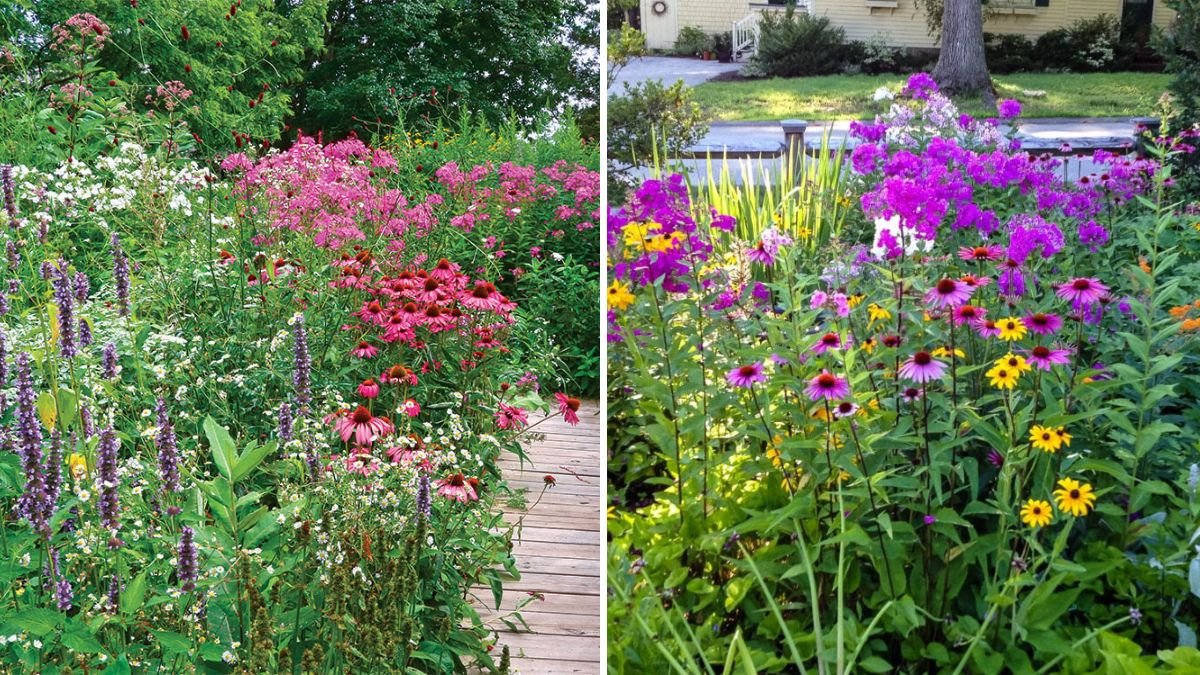Pollinators—bees, butterflies, hummingbirds, and other beneficial insects—play a critical role in maintaining healthy ecosystems and supporting the growth of fruits, vegetables, and flowering plants. Yet, their populations are declining due to habitat loss, pesticides, and climate change. One of the most effective ways to help pollinators thrive is by creating a flower bed specifically designed to attract and sustain them. A well-planned pollinator-friendly flower bed not only supports biodiversity but also brings vibrant colors, textures, and life to your garden.
This guide provides a step-by-step approach to building the perfect pollinator-friendly flower bed, including plant selection, layout, maintenance, and additional tips to create a sustainable, thriving environment.
1. Understand the Needs of Pollinators
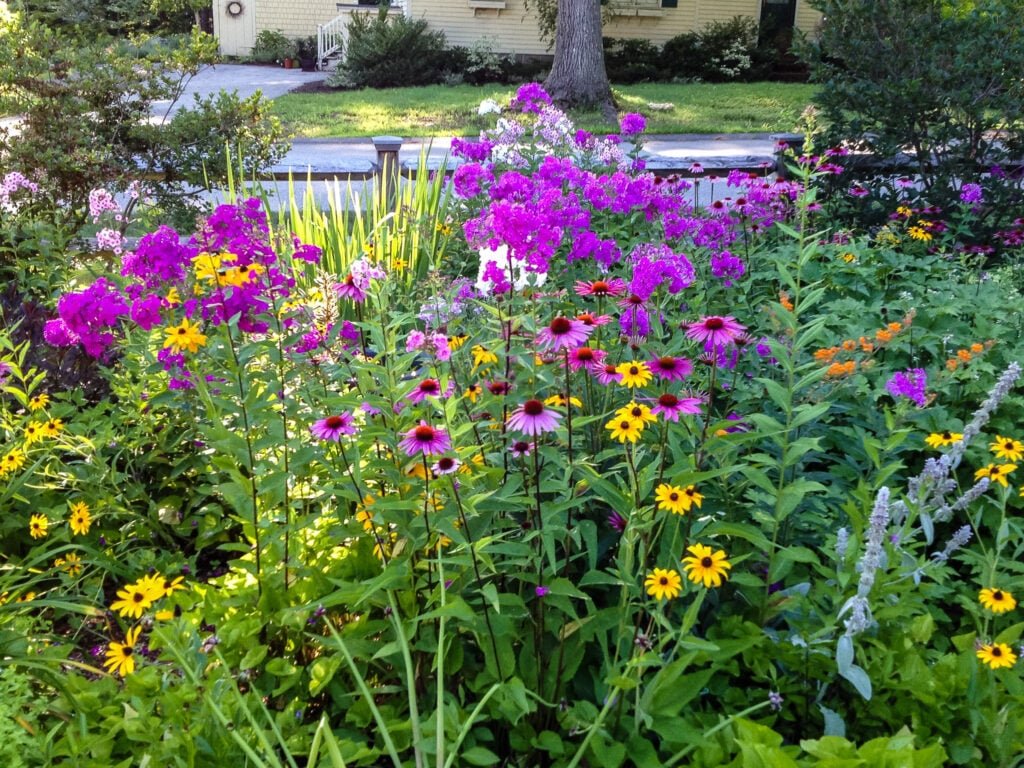
Before designing a flower bed, it’s important to understand the basic requirements of pollinators:
- Food Sources: Pollinators need nectar and pollen to survive. Nectar provides energy, while pollen supplies protein and other nutrients.
- Shelter: Bees and other insects require places to rest or nest, such as undisturbed soil, hollow stems, or woody shrubs.
- Water: Fresh water sources, such as shallow dishes or birdbaths, support pollinator hydration.
- Diverse Habitats: Different pollinators are attracted to different flowers, so diversity in color, shape, and bloom time is key.
Tip: Incorporate plants that bloom at various times throughout the season to provide a continuous food source from early spring to late fall.
2. Choose the Right Location
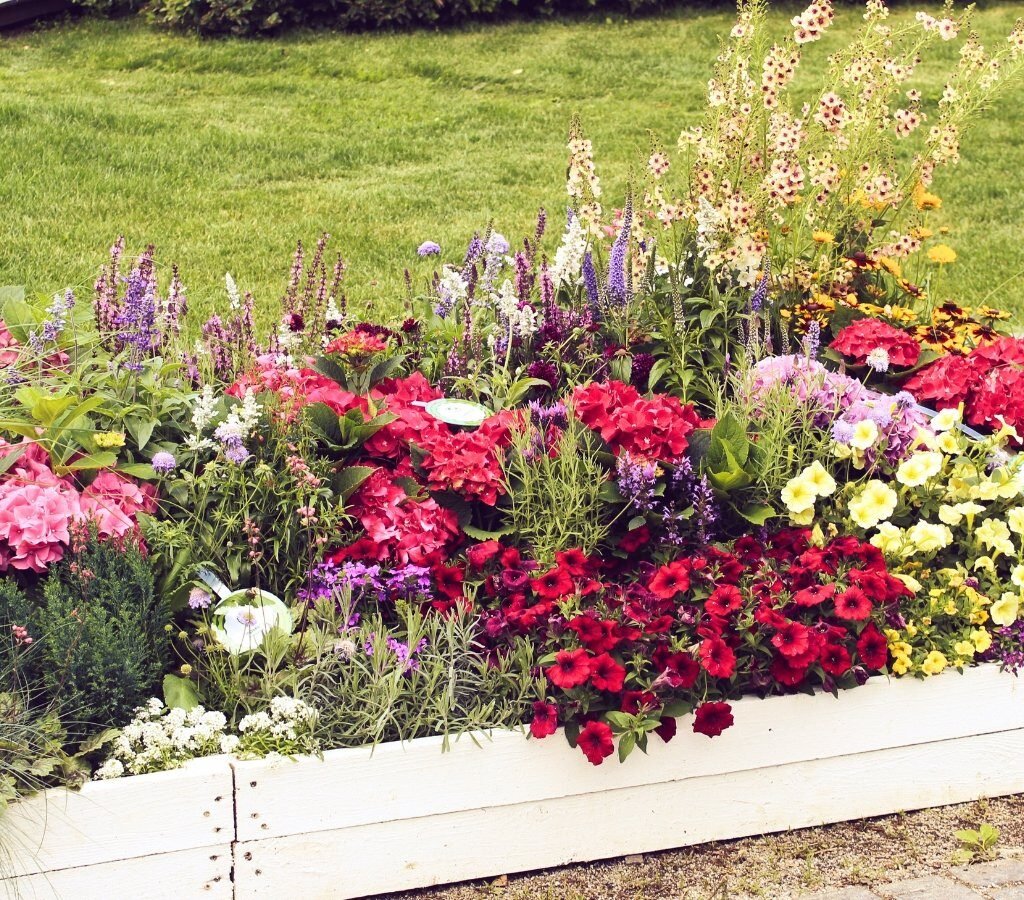
The success of your pollinator-friendly flower bed begins with proper placement:
- Sunlight: Most pollinator-friendly plants prefer full sun, meaning at least six hours of direct sunlight per day.
- Shelter from Wind: Pollinators are less likely to visit flowers in windy areas, so place your bed near a fence, wall, or natural windbreak.
- Accessibility: Ensure the bed is accessible for maintenance but avoid heavy foot traffic, which can disturb nesting insects.
Tip: Consider placing the flower bed near vegetable gardens or fruit trees to boost pollination and increase crop yields.
3. Select a Variety of Pollinator-Friendly Plants
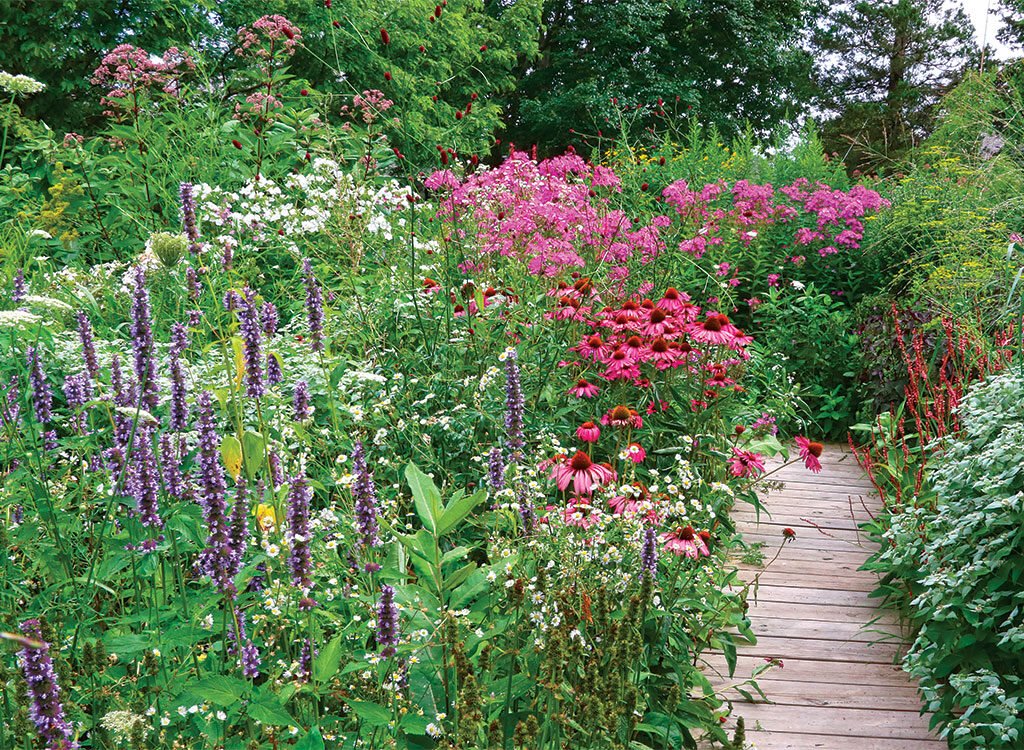
Diversity is the key to attracting a wide range of pollinators. Include a mix of perennials, annuals, shrubs, and native plants to provide multiple food sources and habitats.
Recommended Pollinator-Friendly Flowers:
- Lavender: Attracts bees and butterflies; its fragrant flowers last for months.
- Coneflowers (Echinacea): Bright, sturdy blooms loved by bees, butterflies, and hummingbirds.
- Bee Balm (Monarda): Excellent for attracting hummingbirds and bees; produces tubular, colorful flowers.
- Milkweed (Asclepias): Essential for monarch butterflies as a host plant for caterpillars.
- Sunflowers (Helianthus): Provide pollen and nectar while offering seeds for birds.
- Goldenrod (Solidago): Late-season blooms that support bees and butterflies in the fall.
Consider Plant Shapes and Colors:
- Tubular flowers: Attract hummingbirds.
- Flat-topped clusters: Ideal for butterflies to land on.
- Bright colors: Bees are drawn to blue, purple, and yellow; butterflies prefer red, orange, and pink.
Benefits:
- Ensures continuous food throughout the growing season.
- Attracts a wider range of pollinators for increased biodiversity.
- Adds visual interest and a natural, vibrant aesthetic.
Tip: Use native plants whenever possible, as they are adapted to your local climate and pollinators.
4. Plan for Layering and Height
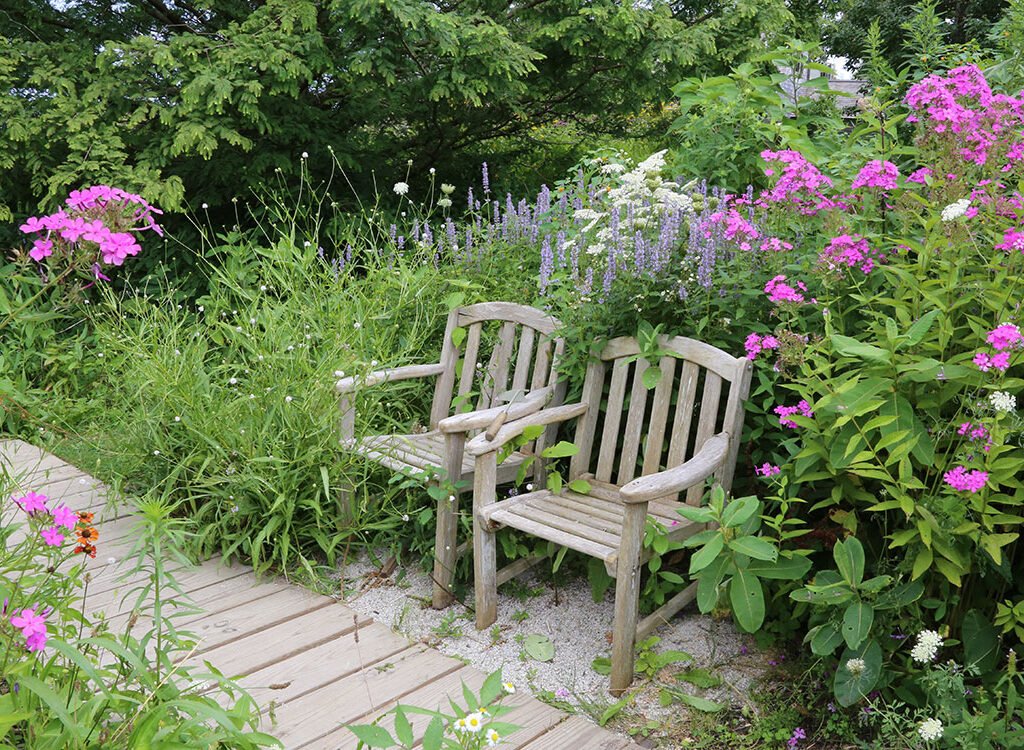
A well-structured flower bed enhances both aesthetics and pollinator access. Consider layering plants by height:
- Back Layer: Taller plants like sunflowers, bee balm, or foxgloves create a backdrop and shelter.
- Middle Layer: Medium-height flowers such as coneflowers and lavender provide central visual interest.
- Front Layer: Low-growing plants like alyssum, sedum, or creeping thyme make pollinators feel safe and offer easy access to nectar.
Benefits:
- Creates a three-dimensional garden with color and texture.
- Allows pollinators of all sizes to reach flowers comfortably.
- Improves airflow and sunlight exposure to reduce disease risk.
Tip: Use curved or irregular bed shapes to mimic natural landscapes and provide diverse pollinator pathways.
5. Provide Shelter and Nesting Opportunities
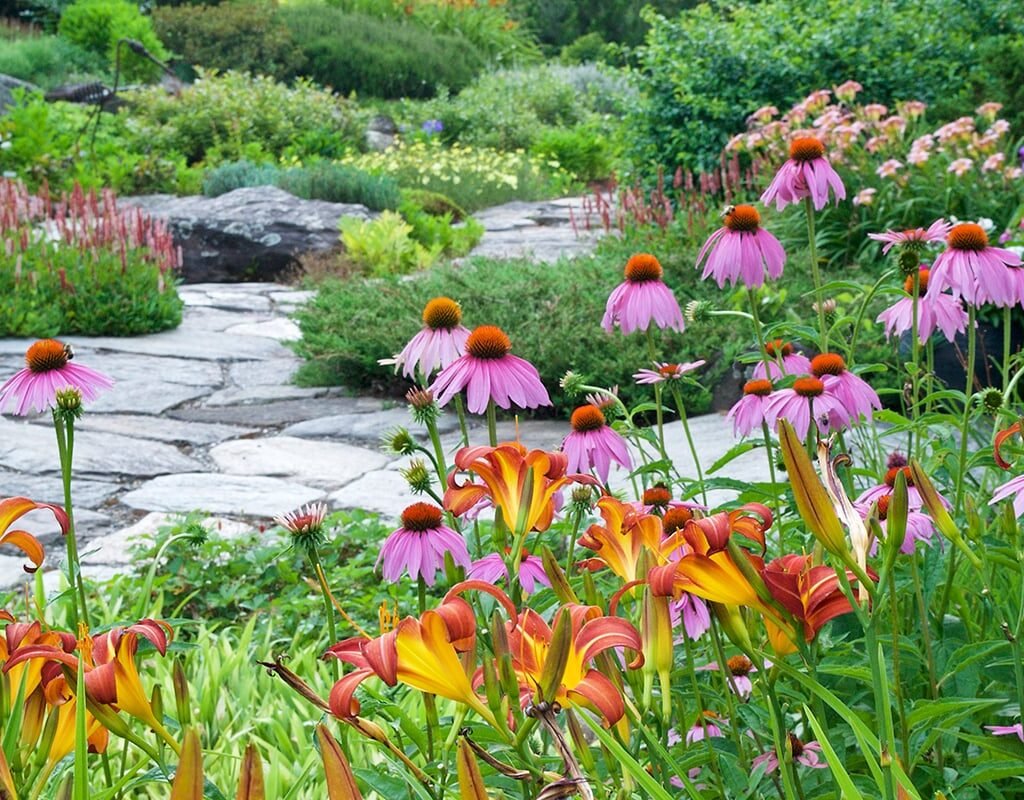
Pollinator-friendly gardens should include more than flowers. Providing shelter and nesting sites encourages repeat visits and supports population growth.
Ideas for Pollinator Shelter:
- Bee Hotels: Small wooden boxes filled with bamboo tubes or drilled holes offer nesting spots for solitary bees.
- Hollow Stems and Brush Piles: Leave some undisturbed plant stems or a small brush pile for overwintering insects.
- Low-Growing Shrubs: Provide cover for butterflies and beneficial insects.
- Bare Soil Patches: Some native bees nest directly in the ground, so leave small bare patches in sunny locations.
Benefits:
- Supports the full lifecycle of pollinators.
- Encourages beneficial insects that also help control garden pests.
- Promotes long-term garden sustainability.
Tip: Avoid disturbing these shelters once established, especially during breeding and overwintering seasons.
6. Avoid Chemicals and Pesticides
Pollinators are highly sensitive to chemicals. To protect your flower bed:
- Eliminate Pesticides: Use natural pest control methods such as neem oil, insecticidal soaps, or companion planting.
- Choose Organic Fertilizers: Compost, manure, or balanced organic fertilizers provide nutrients without harming pollinators.
- Plant Disease-Resistant Varieties: Reduces the need for chemical interventions.
Benefits:
- Protects pollinators’ health and encourages frequent visits.
- Promotes a thriving ecosystem with natural predator-prey balance.
- Supports safe consumption of nearby fruits and vegetables.
Tip: If chemical treatment is unavoidable, apply it at night when pollinators are less active.
7. Maintain the Flower Bed for Longevity
A pollinator-friendly flower bed requires consistent care to remain vibrant and productive.
Maintenance Tips:
- Deadhead Flowers: Remove spent blooms to encourage new flowering.
- Water Strategically: Water in the early morning to avoid evaporation and allow pollinators to feed safely later in the day.
- Mulch: Use organic mulch to retain soil moisture and suppress weeds while allowing pollinator access.
- Prune Wisely: Avoid cutting all flowers at once; leave some seed heads for late-season pollinators.
- Rotate Plants Annually: Introduce new species each year to prevent soil depletion and attract diverse pollinators.
Benefits:
- Ensures continuous bloom and food supply for pollinators.
- Maintains soil fertility and garden aesthetics.
- Supports the long-term health of your pollinator-friendly habitat.
Tip: Observe pollinator activity regularly to understand which plants are most attractive and adjust plantings accordingly.
8. Add Complementary Features
Enhance your pollinator-friendly flower bed with additional elements that attract and support wildlife:
- Water Sources: Shallow bowls with stones for bees to land on.
- Rocks and Logs: Offer basking or resting spots for insects and butterflies.
- Companion Plants: Herbs like thyme, oregano, and rosemary attract pollinators and repel pests naturally.
- Seasonal Flowers: Plant early bloomers like crocus and tulips for spring nectar, and late bloomers like goldenrod for fall sustenance.
Benefits:
- Creates a holistic environment for pollinators.
- Enhances the visual appeal and sensory experience of the garden.
- Encourages biodiversity beyond just flowering plants.
Tip: Incorporate layers of texture, color, and height to simulate natural habitats that pollinators prefer.
Conclusion
Building the perfect pollinator-friendly flower bed is both an art and a science. By understanding pollinator needs, selecting diverse and colorful plants, providing shelter, avoiding chemicals, and maintaining the garden carefully, you can create a thriving, beautiful space that supports bees, butterflies, hummingbirds, and other beneficial creatures.
A pollinator-friendly flower bed is more than just a garden; it’s a living ecosystem that promotes biodiversity, supports food production, and enhances the natural beauty of your surroundings. With thoughtful planning and ongoing care, you can transform your outdoor space into a pollinator haven that flourishes year after year, benefiting both the environment and your own enjoyment of the garden.
Tip: Document your garden’s pollinator visitors and flowering patterns over the seasons. This will help refine plant selection and create a sustainable, evolving pollinator-friendly landscape.
